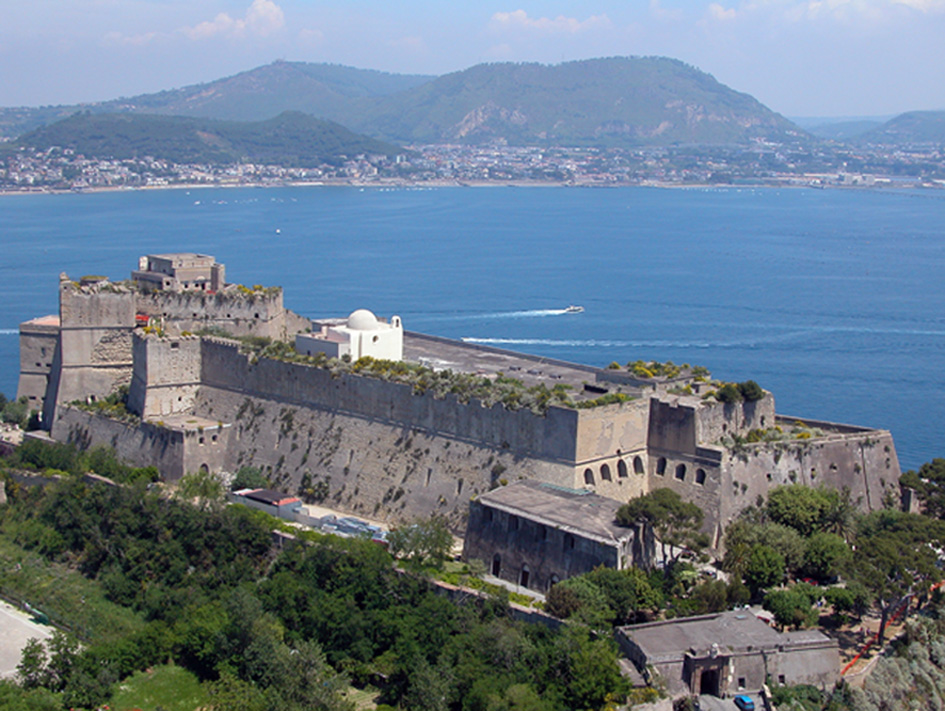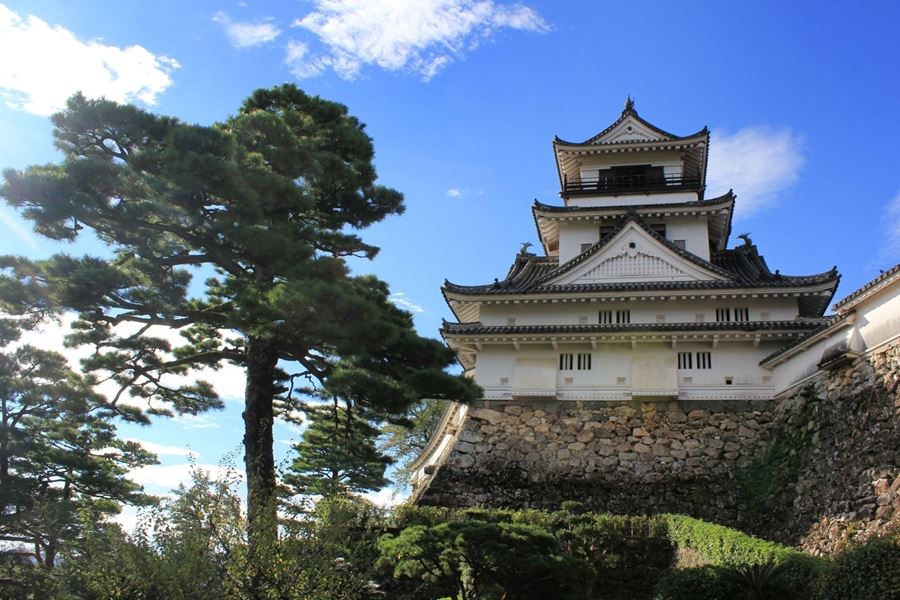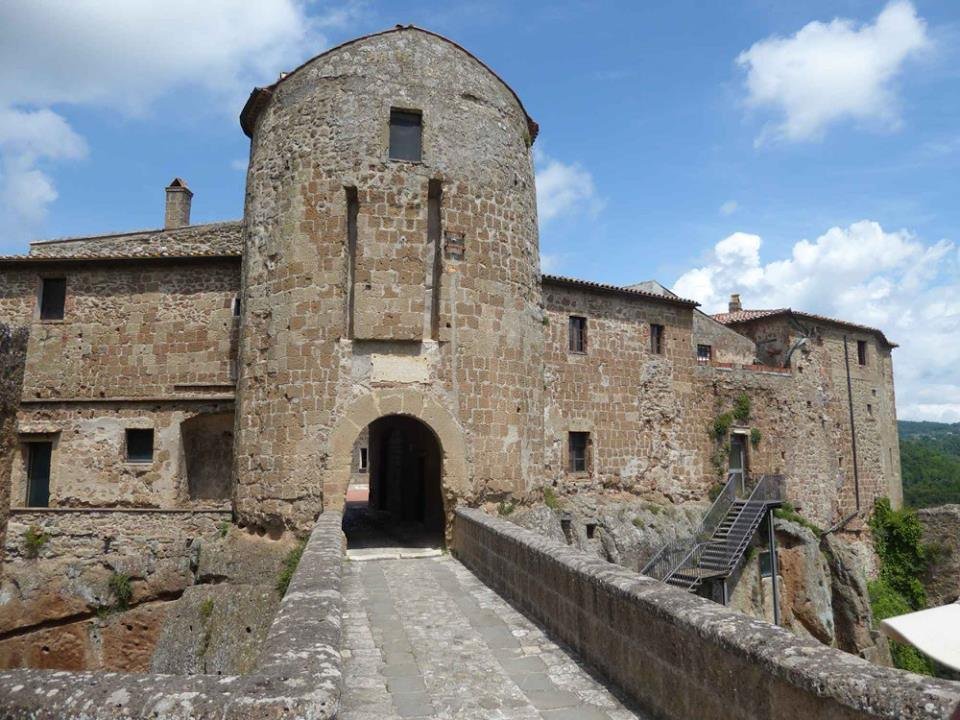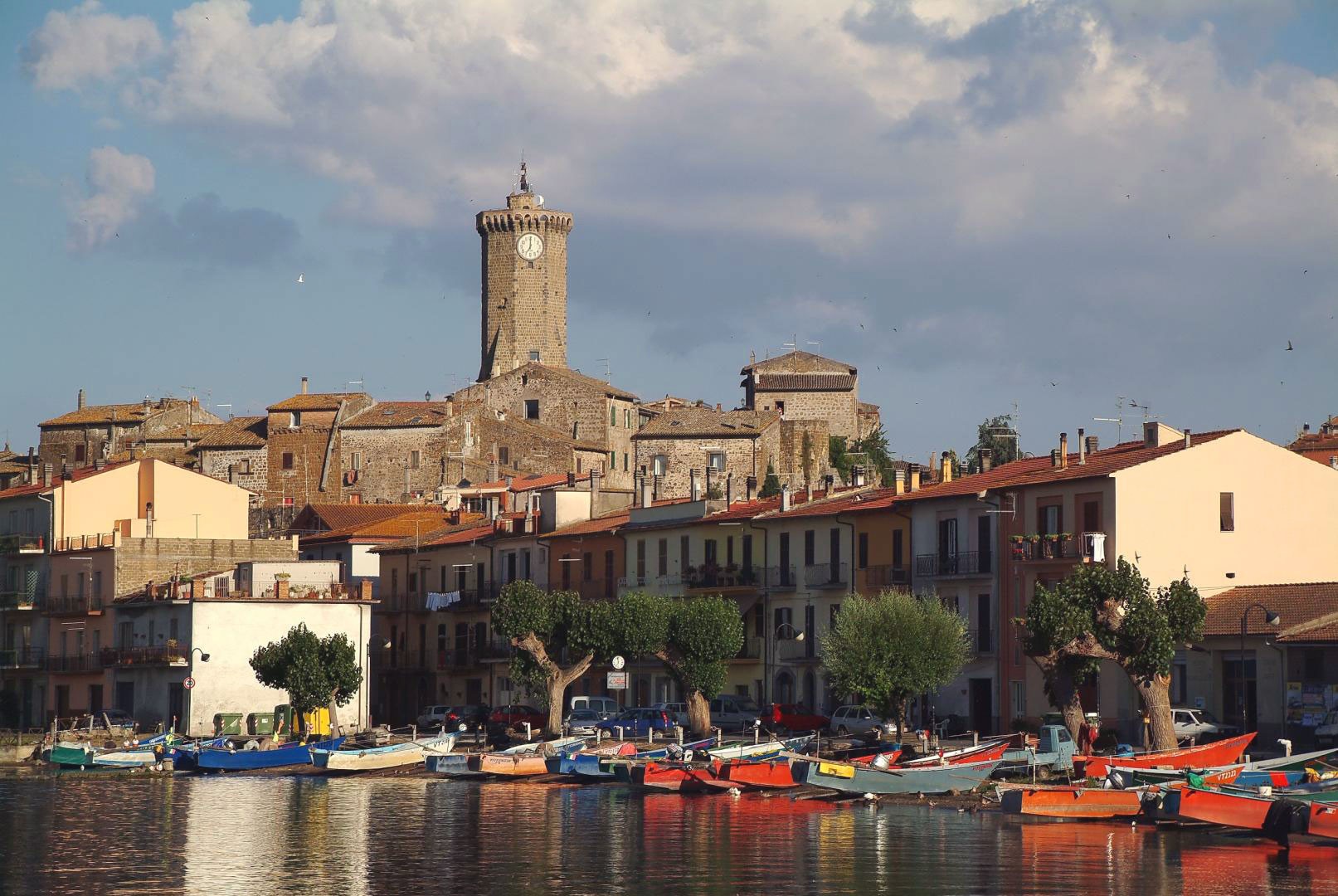The Aragonese Castle was built at the end of the 15th century by Alfonso of Aragon to defend the Gulf of Pozzuoli from Moorish incursions, as part of a vast program of construction of fortification systems conducted throughout southern Italy, with the aim of both arranging a viable defense against frequent Saracen invasions and against the tenacious antagonism of local barons, who were often united to bring down the royal domain. The extensive program of strengthening the defense system was conceived as an articulated series of fortifications organically connected to each other; piazzeforti were therefore built, arranged mainly along the coast (at Gaeta, Mondragone, Ischia, Baia and Pozzuoli), to hinder the landing of enemy fleets. Historian Riccardo Filangieri reports, in fact, that the sovereign, availing himself of the advice of architect Francesco di Giorgio Martini, had a fortification erected in Baia to defend the wide inlet from Miseno to Nisida. No traces remain today of the original architecture of the castle, such as it was built in the Aragonese period and then radically transformed in the following decades of the Spanish viceroyalty as a result of innovations introduced in military techniques. The completion of the work of strengthening the building, left unfinished by the Aragonese, was implemented later by Viceroy Pedro Alvarez de Toledo, when the castle was damaged in 1538 by the eruption of Monte Nuovo, an event that necessitated extensive restorations which, combined with those desired by Don Pedro, resulted in the definitive loss of the building’s primitive architectural physiognomy. This is preserved represented, however, in a woodcut of 1539, in which a very tall crenellated keep with a quadrangular plan is glimpsed, surrounded by a curtain wall in turn reinforced by corner towers similarly crenellated, with a scarp base and square plan. The new building body was considerably enlarged towards the south, being built with mighty walls, directly resting on the tufa rock bank, which made it take on the appearance it retains to this day. The present plan of the fort is elongated and runs parallel to the eastern slope of the promontory. To the northwest is located, in an advanced position, the watchtower called Torre Tenaglia, due to the shape of the bulwark placed at its base; in the opposing corners, towards the south, rise two other bulwarks, of which the one located to the southeast allowed the control of access to the sea, while the one to the southwest ensured the defense of the entrance from the land, which was done by means of a winding flight of steps leading to a first drawbridge. To the west, protection was also ensured by the mouths of fire located along the crenellated perimeter and a double bastioned wall. The original residential nucleus of the castle (maschio or donjon) was located, however, at the highest part of the promontory, near the Tenaglia Tower, and the path leading up to it was protected by three more drawbridges. In 1575 Benvenuto Tortorelli proposed the construction of a curtain wall on the sea side having identified a weakness in the castle’s defense. About a century later, in 1670, the engineer of the Royal Court, Francesco Antonio Picchiatti, indicated urgent maintenance works, including the restoration of the parapet of the bulwark of the Dames and the retaining wall of the one above, called the Stendardo. In the eighteenth century the castle was then affected by numerous events, which contributed to its damage: for thirty years it was occupied by Austrian troops; then it suffered new sieges during the brief period of the Neapolitan Republic and a further brief occupation by the French troops of Joseph Bonaparte. After the Bourbon reconquest, therefore, the sea fort was strengthened and new quarters for soldiers were built. In 1887 the military garrison of the castle finally ceased its function as a fortification placed in defense of the Phlegrean coastline, so that from that period a phase of slow decline began, with continuous transfers of ownership from one administration to another. During World War I the fort was used for the custody of prisoners of war, so high walls were erected on the terrace of the Tenaglia Tower to create an enclosure. In 1926 the High Commissariat of the Province and the City of Naples obtained from the State Property Office that the castle be used as the site of a large institute for Orphans of War, so that within three years considerable works were carried out that radically transformed the building, altering and sometimes erasing the traces of the constructions built in previous centuries. In 1975 the castle also ceased its function as an orphanage, and the property then returned to the State Property Office, which in 1984 arranged to assign it to the then Archaeological Superintendence of the provinces of Naples and Caserta, which had proposed its use as a dedicated archaeological museum of the Phlegrean area. Finally, since 1993 it has become home to the Archaeological Museum of the Phlegraean Fields, which consists of six topographical sections devoted respectively to Cumae, Puteoli, Rione Terra, Liternum, Baia and Misenum, divided into fifty-six museum rooms













